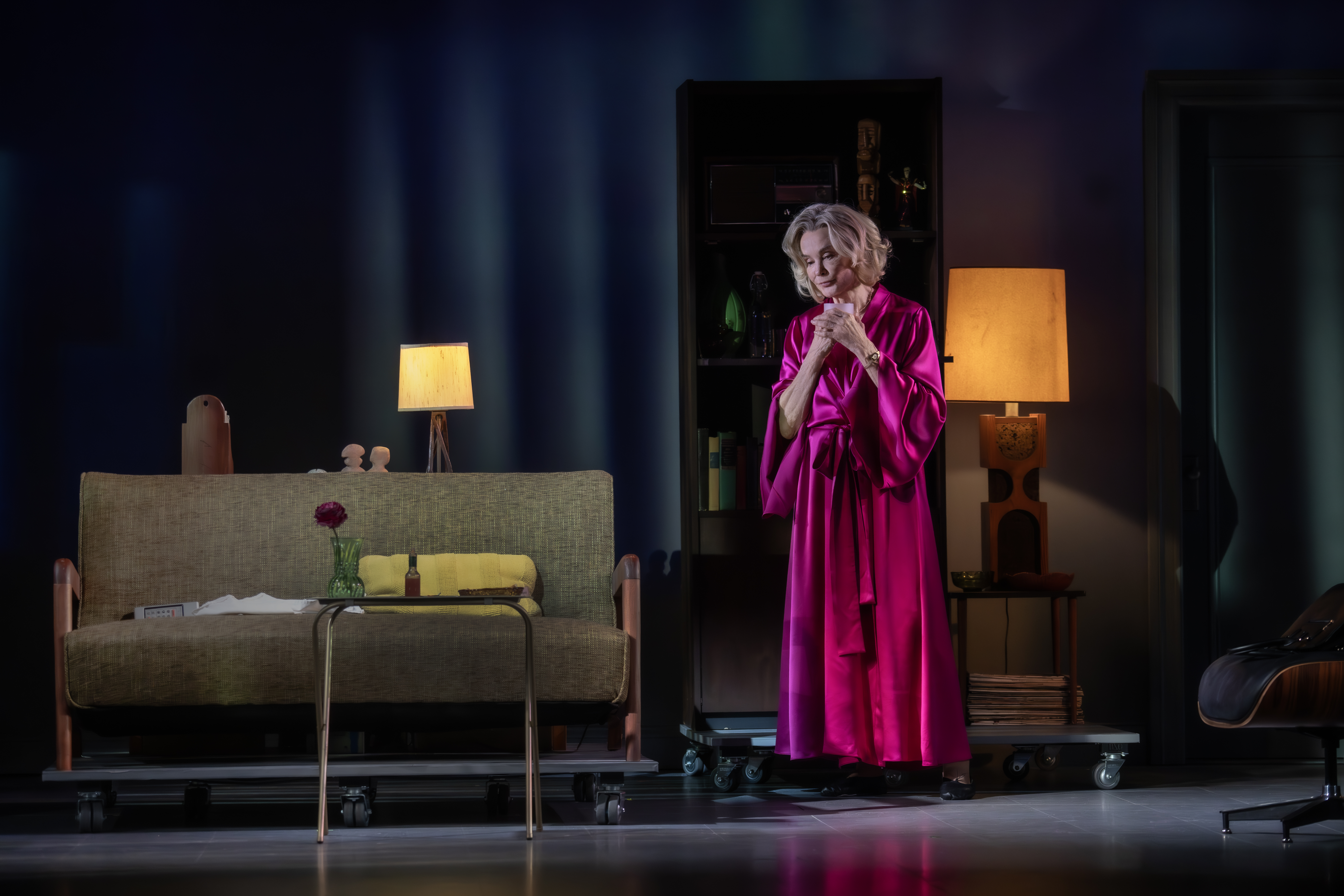Last Easter

(Photo © Carol Rosegg)
Part of Veanne Cox’s enormous appeal is her marvelous cartoon face. It suddenly hit me whom Cox resembled when I was watching Bryony Lavery’s lovely Last Easter, in which Cox plays June, a woman with terminal cancer. She looks like Little Lulu — or, rather, like Little Lulu might have looked had creators Marge Henderson Buell and John Stanley allowed her to grow up. Cox has the dots for eyes, the isosceles triangle nose, the lines-for-lips mouth. And though it might seem insulting to compare a respected actress to Little Lulu, it isn’t. From the get-go Lulu was a bright, no-nonsense, innocently lovable kid whom you really cottoned to; and she was extra-special in that she made her first appearance in the Saturday Evening Post, which wasn’t hospitable to any old cartoon character.
Like Lulu, June is intelligently no-nonsense, and that’s how Cox plays her. You’re immediately fond of both June and Cox for being so lovably bright. For June, “bright” has a couple of meanings, one of which involves her career: She’s a lighting designer, and she responds to the world in terms of how it’s lit. Practically the first things she talks about — after matter-of-factly relaying her cancer diagnosis — are the light sources in Caravaggio’s “Taking of Christ.” Then dramatist Lavery finds reasons to have her mention lighting right through to her last luminous appearance, a moving theatrical coup that won’t be divulged here.
Because June negotiates a few of Elizabeth Kubler-Ross’s five stages of grief over death and because, in her final stage, she asks three close friends to assist her in a calculated demise, Last Easter could be described as a cross between Wit and Whose Life is It Anyway? It isn’t that easily pigeon-holed, however. For while this play is the story of June’s final year or so, it’s also the story of how her trio of buddies tends to her. In other words, this is a wise work about the gifts of friendship, about friends becoming family. Gash (the gloriously swishy Jeffrey Carlson), Leah (the cute-as-a-button Clea Lewis), and Joy (the stunning, intense Florencia Lozano) contribute immeasurably to June’s life, and she contributes to theirs — which is why, when June leaves the play, it’s not quite time for it to end.
Just as a good deal of the second act is given over to the chums’ decision to help June die, much of the first act is given over to their helping her live. Gash, Leah, and Joy take their pal on a trip to France with a hidden agenda: They plan a stop at Lourdes for a recovery miracle. Although they execute their plan, they don’t reap the desired results; June sees the light, but it’s not the heavenly glow that accompanies Bernadette’s Madonna. Instead, the realistic June, who admits to wishing for a miracle despite her doubts, has a clearer vision of her death. This sequence — directed by Doug Hughes (who never misses) and played beautifully by the three friends and Jeffrey Scott Miller as the ghost of Joy’s late boyfriend — is truly luminescent.

and Veanne Cox in Last Easter
(Photo © Carol Rosegg)
Last Easter, which takes place around two Easters a year apart, is tonic in another way. As part of their defense against heartbreaking emotions, June and friends indulge in joke-telling. They’re all inherently amusing people who continue to see humor in unlikely circumstances. Discussing the wig that June wears, presumably after chemo treatments, Gash and Leah make a comparison to the look of the Kim Hunter character in Planet of the Apes. Lavery’s play is not just about the sacrifices that friends make for one another but also about how shared senses of humor heal — if not entirely, than at least provisionally. In acknowledgments found in the printed script, Lavery thanks several joke donors; she certainly owes a huge debt to whomever told her the one involving the Mary Poppins ditty “Supercalifragilisticexpialidocious.”
Since June is a lighting designer, Joy an actress, Leah is a prop designer, and Gash is prone to imagining musical comedy scenarios, Lavery is also penning a valentine to the theater. Frequently, these we’re-in-showbiz exercises come off as solipsistic. Last Summer doesn’t; it’s about big hearts, and one of them belongs to Lavery, whose heart is big enough to surmount the self-serving attitude. A play about a lighting designer had to be a plum assignment for a lighting designer, and Clifton Taylor has great fun with it. Lights of all sorts, including a menorah, flick on and off during the play and eventually become a focus of attention in their own right. Hugh Landwehr designed June’s cluttered studio, where much of the action takes place; Catherine Zuber did the costumes, which include a nun’s headpiece for Gash (don’t ask; see for yourself). The original music and the sound design is by Fabian Obispo.
Though I wasn’t an advocate of Lavery’s recent Frozen (which is now under the shadow of plagiarism), I’m happy to report that there’s a profound charm to Last Easter. The play takes death seriously. Just as seriously, and comedically, it celebrates the afterlife conferred through friends’ memories.











